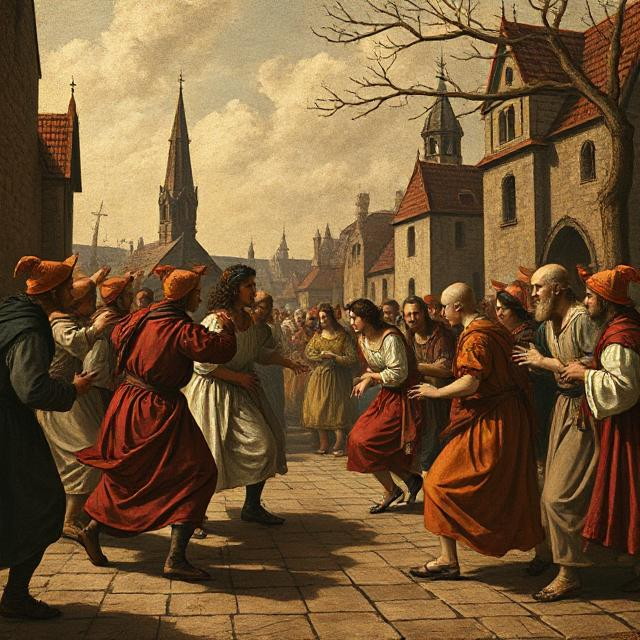Your cart is currently empty!
The Dancing Plague of 1518: A Mysterious Epidemic

The Dancing Plague of 1518: A Mysterious Epidemic
The Dancing Plague of 1518 was a bizarre and unexplained phenomenon that occurred in Strasbourg (then part of the Holy Roman Empire, now France). Over several weeks, hundreds of people were struck by an uncontrollable urge to dance relentlessly, sometimes to the point of exhaustion, injury, or even death.
How It Started
- In July 1518, a woman named Frau Troffea suddenly began dancing in the streets.
- She danced for days without stopping, and within a week, dozens of others had joined her.
- Eventually, the number of afflicted grew to around 400 people.
Symptoms & Effects
- Victims exhibited frantic, involuntary movements, unable to stop even if they were bleeding or collapsing.
- Some reportedly died from exhaustion, heart attacks, or strokes.
Authorities’ Strange Response
- Thinking the dancers needed to “dance it out”, city officials hired musicians and built a stage to accommodate them—this only made things worse.
- Eventually, dancers were taken to a shrine dedicated to St. Vitus, where many recovered.
Possible Causes
Historians and scientists still debate what caused the event, with theories including:
- Mass Hysteria (Psychogenic Illness) – Stress, disease, and famine may have triggered a collective psychological reaction.
- Ergot Poisoning – A toxic fungus (ergot) found in rye bread can cause hallucinations and convulsions, though this theory has weaknesses.
- Religious or Superstitious Influence – Some believed it was a curse from St. Vitus, a patron saint linked to dancing fits.
Legacy & Impact
- The Dancing Plague remains one of history’s strangest medical mysteries.
- Similar cases occurred in medieval Europe, but 1518’s outbreak was the most famous.
- Today, it is often studied as an example of mass hysteria and social stress responses.
Though the exact cause is unknown, the Dancing Plague of 1518 remains an eerie and fascinating historical anomaly.